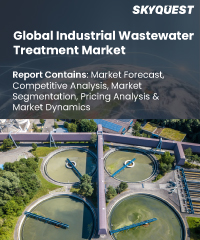
Report ID: SQMIG55D2003

Report ID:
SQMIG55D2003 |
Region:
Global |
Published Date: March, 2024
Pages:
182
|
Tables:
134 |
Figures:
77
Drivers
Stringent Regulations to Prevent Environmental Hazards will Drive Demand for Industrial Wastewater Treatment
Restraints
Heavy Operational Cost might Hinder Market Growth
Our industry expert will work with you to provide you with customized data in a short amount of time.
REQUEST FREE CUSTOMIZATIONWant to customize this report? This report can be personalized according to your needs. Our analysts and industry experts will work directly with you to understand your requirements and provide you with customized data in a short amount of time. We offer $1000 worth of FREE customization at the time of purchase.

Report ID: SQMIG55D2003